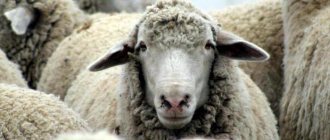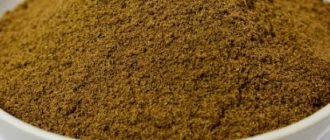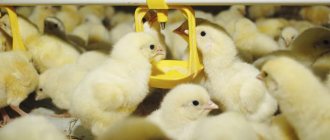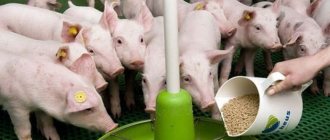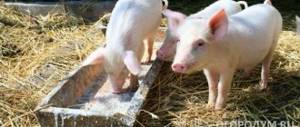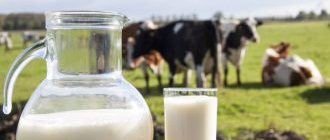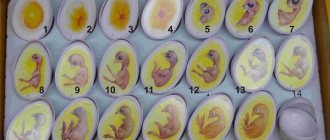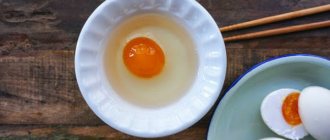Composition of egg yolk
In a chicken egg, the yolk makes up 33% of the total volume.
(on average, in liquid form). Moreover, it contains 3 times more calories than protein - approximately 60 kcal. If we take an average-sized egg as a sample, its quantitative composition will be as follows: 210 mg of cholesterol, 2.7 g of proteins, 0.61 g of carbohydrates and 4.51 g of fat. By the way, an average chicken egg weighs about 50 grams. The fats in the yolk are mainly represented by fatty acids - saturated, polyunsaturated and monounsaturated. In terms of percentage, oleic acid is in the lead - it is 47%.
Our ancestors treated this food with much more respect, and did not divide it into components according to various characteristics. In particular, the yolk was considered a symbol of the sun, and therefore medicinal properties were attributed to it. Often people who were fed eggs recovered. Therefore, over time, people began to bring eggs from birds and domestic chickens as gifts to their pagan gods, so that in return they would give their laying hens more fertility. Nowadays, scientists calculate the amount of cholesterol and scare gullible diet fans with it.
Why I love my robot vacuum cleaner so much: sharing my own experience
What is the structure of an egg - what does it consist of?
Any bird reproduces by laying and incubating eggs. It is in the egg, under a dense shell, that the life of a small bird begins.
Chicken eggs, like the eggs of other birds, have a similar and complex structure, differing only in the percentage of components.
Read also: Raising broiler chickens: maintenance and feeding features
So, a chicken egg consists of:
- shells;
- Subshell membrane;
- Funiculus (chalaza);
- Yolk membrane;
- Yolk;
- Squirrel;
- Embryonic disc;
- Air chamber;
- Cuticles.
Contraindications for egg yolk
In many countries, scientists have conducted research on eggs - white and yolk separately
. As for the yolk, it has been found that the yolk of an average chicken egg can contain between 215 and 275 milligrams of cholesterol. When various comparisons were made, it was found that a bun with a fast food patty or a hamburger from a fast food restaurant contained a maximum of 150 milligrams of cholesterol. Therefore, for those who are at risk of heart disease, the yolk should be eaten with caution, because it can be consumed per day in foods that contain no more than 200 milligrams of cholesterol. The risk group is also for all diseases that are caused and aggravated by high levels of cholesterol in the blood. Eggs can be eaten without restrictions only by absolutely healthy people, scientists say. Special mention is made for children and the elderly - they can eat no more than 2-3 eggs a week, and preferably not fried, but boiled.
Currently, similar studies are being conducted by American scientists - they claim that egg yolk is unfairly accused of raising cholesterol. According to their research, lecithin, which is contained in sufficient quantities in eggs, prevents the increase in blood cholesterol levels. They even conducted experiments in two groups of people at risk for heart disease. One group was given no eggs at all for two weeks, while subjects in the second group were given 15 yolks per day. After two weeks, repeated tests were taken from everyone, and out of 13 people - yolk eaters - cholesterol increased in only two, decreased in two, and remained unchanged in the rest. Apparently, cholesterol levels are a purely individual matter, and there is no point in blaming all the troubles on the egg yolk.
In addition, there is a version that cholesterol itself is not only harmful - it replaces the lack of calcium in the blood. Our smart body itself regulates the processes in which the lack of some substances is replaced by others. And when a person does not provide his body with calcium, the walls of blood vessels become fragile and can “break.” They can literally develop holes in them as they become thinner. And then cholesterol comes to the aid of the vessels - it seems to “seal” those places where the vessels could burst. True, in this case the vessels narrow, but this is already a payment for the fact that not everything is in order in the body. And we are still scared by the fact that cholesterol narrows blood vessels. You just need to understand that nothing happens by chance in the body - it is a very smart self-healing system that fights to the last, although we treat it simply disgracefully. And the reason for excess cholesterol is not that a person eats too much fatty foods or egg yolks, but that his diet is not balanced, and the body is simply forced to “protect itself” from its careless owner.
It is quite possible that soon the traditional approach to egg yolk will change, and we will eat eggs more often than nutritionists currently recommend. However, for healthy people such prohibitions do not exist at all.
Detailed structure of a chicken egg
The shell covers the outside of a chicken egg and is important because it maintains its physical integrity and acts as a bacteriological barrier. It consists mostly of a calcium matrix with organic impurities, that is, calcium is the most representative and important element in the shell. It also contains other minerals and trace elements, although in lower concentrations:
The structure of the shell is as follows: it is penetrated by many pores that form tunnels between mineral crystals. These tunnels allow the exchange of gas between the inside of the egg and the outside surrounding atmosphere. The number of pores varies from 7,000 to 15,000. A large concentration of pores is located in the lower blunt part of the product, where the gas chamber is located under the shell.
The color of the shell can be white or brown, depending on the breed of chicken and the concentration of pigments called porphyrins located in the calcium matrix of the shell. These pigments do not in any way affect the quality and nutritional properties of the product. The different shades of shell color also depend on the individual condition of each chicken. The type of food and the poultry rearing system do not in any way affect the color of the shell or the intensity of this color.
The quality and strength of the shell depends mainly on the mineral metabolism of the chicken and, as a result, on its proper feeding. Other factors affecting shell strength are:
- genetics;
- sanitary conditions for keeping poultry;
- ambient temperature.
Two membranes cover the inside of the shell, they are called armored inner and outer membranes . Both surround the protein and prevent bacteria from entering it.
As the product loses its freshness, it also loses water, evaporating through the pores in the shell, causing the gas chamber at its lower pole to increase in volume. Product stored at high temperatures ages faster. The height of the air chamber in an egg is one of the main signs of its freshness and, as a result, quality, regardless of the number of days that have passed since the product appeared. Category A product must have an air chamber height of less than 6 mm .
The integrity and cleanliness of the shell are the factors that determine whether an egg is fit to be eaten fresh or not. When the shell is dirty or damaged, it is possible that organisms have entered the center of the product.
For this reason, a product whose shell is dirty, has cracks or other signs of damage to its integrity cannot be supplied for sale.
It is a common belief that eating ground shells will allow you to use the large amount of calcium contained in them. However, the chemical state in which calcium is found in the shell makes it impossible for our bodies to absorb it.
As mentioned above, the egg white consists of two distinct parts: viscous and flowing.
The viscous part of the white surrounds the yolk and is the main source of riboflavin and egg protein. The less viscous or flowable portion of the protein is found closer to the shell. When you peel a fresh egg, you can clearly see the difference between the two parts as the yolk, surrounded by the viscous white, floats in the center. As the egg loses its freshness, the viscous white loses its consistency and eventually merges with the runny part.
The basic composition of egg white is as follows: water 88%; proteins 12%. The most important protein (54% of the weight of all other egg proteins) is ovalbumin, whose properties are interesting from a nutritional and culinary point of view. The quality of a protein is related to its fluidity and can be assessed by the viscosity of its outer shell.
The white is transparent, however, in some cases whitish “clouds” may appear in it, which do not imply any problem for its use as a food product and are associated only with the freshness of the egg.
The yolk does not just float freely in the egg white, it is held on both sides by intertwined protein threads, which at their other ends are connected to its poles.
The yolk is the central yellowish part of the egg, which is surrounded by a membrane that separates it from the white and provides the shape of the yolk itself. When this membrane breaks, the yolk leaks out and mixes with the white.
The yolk contains the essential vitamins, lipids and minerals of the egg, so from a nutritional point of view it is the most valuable part. The water content of the yolk is approximately 50%.
The solid or dry part of the yolk is equally distributed between proteins and lipids, leaving a small part for vitamins, minerals and carotenoids. The latter are responsible for the yellowish color of the yolk, which can have different colors and shades depending on the feeding of the bird, and have antioxidant properties. Note that the color of the yolk is of commercial interest.
Read also: Mycotoxins in bird feed
Inside the yolk is the germinal disc, a small transparent disc that is the site where embryonic cell division begins in the case of a fertilized egg.
In rare cases, you can find eggs with two yolks. This situation is possible when a hen produces two eggs instead of one during the process of ovulation. This situation is often observed at the beginning of laying, when the chicken begins to lay eggs.
The reddish or brown spots that sometimes appear inside the egg should not be confused with the development of the embryo. These spots represent epithelial cells of the oviduct that separated from it when the egg was formed. These cells do not pose any problem when eating the product and can be easily removed with the tip of a clean knife. When packaging a product, if these spots are visible in the transmitted light of a special camera, then such an egg is no longer considered to belong to quality category A.
Benefits of egg yolk
Egg yolk contains quite a lot of vitamins, and the main one is vitamin B12
. This is a vitamin that brings energy and vitality - it makes a person cheerful and active. In addition, it is given to children when they lose their appetite. Vitamin A forms carotene in the yolk, which is indicated by the yellow color. This is a vitamin for good vision first and foremost. It also prevents the development of aging processes and prevents the formation of cancer cells. Not so much, but vitamins PP, B1, B2, E and D are still present in the yolk, which have a beneficial effect on the entire human body. As you can see, egg yolk is very rich in vitamins, and this makes it a very useful product, especially for baby food.
Among other substances that are in the yolk, one can also note phosphorus, which helps keep teeth and gums in excellent condition, and it also takes an active part in all physiological reactions occurring in the body. There is also selenium, which is classified as an antioxidant. These are substances that protect us from the harmful effects of the environment - tobacco smoke, exhaust fumes, radiation, pesticides and other environmental troubles. The substance choline is necessary to maintain normal functioning of the cardiovascular system, and it also nourishes nerve cells, therefore it is useful for the nervous system. More choline is found in raw yolk.
The substance melatonin takes an active part in the rejuvenation of the body, as well as in the construction of new cells, so it is very useful for skin and hair. The substance lutein will help avoid cataracts and improve vision, as it counteracts the occurrence of eye diseases.
Beauty Recipes
You can make a lot of healthy recipes with egg yolk that don't require any special ingredients.
.
For example, many people know the recipe for washing oily hair with egg yolk , when it is mixed with 1 tablespoon of vegetable oil and 1 tablespoon of carrot and lemon juice is added to the mixture.
Beat the mixture thoroughly and then wash your hair with it. This recipe helps with hair loss. The yolk also helps dry skin if you add the pulp of one ripe banana, thoroughly mashed, and 1 tbsp. spoon of sour cream. Keep the mixed mass on your face for 10-15 minutes, then wash off with warm boiled water. The skin after this mask will be very soft and tender.
In principle, egg yolk can be mixed with any chopped vegetables or berries
to get an excellent nourishing mask for dry skin.
Article protected by copyright and related rights. When using or reprinting material, an active link to the women's website inmoment.ru is required!

